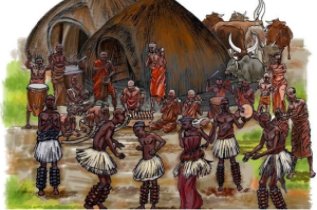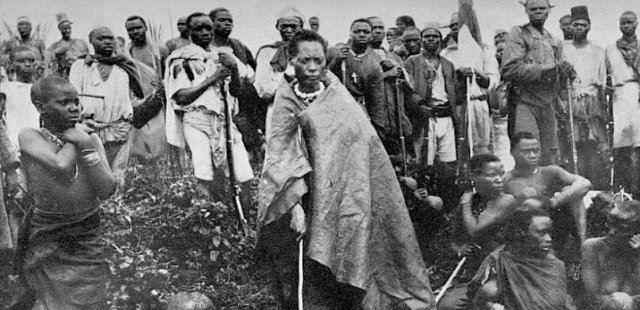Ntungamo History
 Ntungamo forms a sub-district of the Ankole sub-region of Uganda along with Buhweju District, Bushenyi District, Ibanda District, Isingiro District, Kiruhura District, Mbarara District, Mitooma District, Rubirizi District and Sheema District. Together they cover the area that constituted the Ankole Kingdom that was abolished along with the other traditional kingdoms that made up Uganda when colonised by the British, by then President Milton Obote (term of office 15 April 1966 – 25 January 1971; 17 December 1980 – 27 July 1985) in 1967.
Ntungamo forms a sub-district of the Ankole sub-region of Uganda along with Buhweju District, Bushenyi District, Ibanda District, Isingiro District, Kiruhura District, Mbarara District, Mitooma District, Rubirizi District and Sheema District. Together they cover the area that constituted the Ankole Kingdom that was abolished along with the other traditional kingdoms that made up Uganda when colonised by the British, by then President Milton Obote (term of office 15 April 1966 – 25 January 1971; 17 December 1980 – 27 July 1985) in 1967.
The earliest legends tell that the first occupant of Ankole was Ruhanga (meaning the creator), who it was believed came, together with his three sons Kairu, Kahima and Kakama,
from heaven to rule on earth.
To determine his rightful heir, Ruhanga set a task for his three sons with the youngest son Kakama winning the competition followed by his elder brother Kahima and lastly the eldest brother, Kairu.
 With that Ruhanga returned to heaven decreeing that his youngest son Kakama, who then assumed the name Ruhanga, should rule and also rule over his elder brothers. Whilst just a myth It should be noted that much of the area's early history was based on such legends and myth later supplemented by archaeological evidence as there was no real written record of local history in East Africa until the European's arrived in the late 19th century).
With that Ruhanga returned to heaven decreeing that his youngest son Kakama, who then assumed the name Ruhanga, should rule and also rule over his elder brothers. Whilst just a myth It should be noted that much of the area's early history was based on such legends and myth later supplemented by archaeological evidence as there was no real written record of local history in East Africa until the European's arrived in the late 19th century).
The actual history of the Ankole Kingdom ~ earlier and more accurately known known as the Nkore Kingdom ~ can be traced back to around 1447 BCE under the rule of Omugabe (monarch) Ruhinda Nyabugaro who was a son of Ndahura, a Kitara king of the Empire of Kitara that straddled the great lakes area of Africa until it was broken up and superseded by smaller kingdoms during the 16th century.
The name Ankole was later given by colonising muzungus (white Europeans in the 19th century) in error as a corruption of Nkole to the composite Nkore kingdom together the former independent kingdoms of Igara, Sheema, Buhweju and parts of Mpororo in which today's Ntungamo was located, when it was incorporated into modern Uganda in 1901 by the signing of the Ankole Agreement leaving the Omugabe as ceremonial head but within a British colonial framework
 It is a kingdom that was not restored by President Museveni in 1993 under the Traditional Rulers (Restitution of Assets and Properties) Statute which saw the other kingdoms that constitute modern day Uganda restored. Some believe that Ankole was not restored because Museveni is from the area and didn't want to see two competing "rulers" not just for power but for local support although just a likely is that it was politically considered that any restoration may lead to a revival of competing Bahima (pastoralists) and Bairu (agriculturalists) caste-like historical tensions with the Bahima (believed to have originally arrived as a nomadic people from the Bahr el Ghazal area of today's South Sudan) acting as superior, symbolised by their exclusive ownership of cattle and later promoted by the visiting Europeans as such to the local Bairu who today make up a large majority of the population.
It is a kingdom that was not restored by President Museveni in 1993 under the Traditional Rulers (Restitution of Assets and Properties) Statute which saw the other kingdoms that constitute modern day Uganda restored. Some believe that Ankole was not restored because Museveni is from the area and didn't want to see two competing "rulers" not just for power but for local support although just a likely is that it was politically considered that any restoration may lead to a revival of competing Bahima (pastoralists) and Bairu (agriculturalists) caste-like historical tensions with the Bahima (believed to have originally arrived as a nomadic people from the Bahr el Ghazal area of today's South Sudan) acting as superior, symbolised by their exclusive ownership of cattle and later promoted by the visiting Europeans as such to the local Bairu who today make up a large majority of the population.
 By 1752 Omukama Kamurari II was on the throne of Mpororo however he was usurped by his brother Kahaya Rutindangyezi, who seized the throne only to see the kingdom later disintegrate and split into six states, in reality little more than independent chiefdoms ruled over by his sons; one of which was Igara (officially the Kingdom of Igara ruled by the Omukama; "king"), where Ntungamo is located.
By 1752 Omukama Kamurari II was on the throne of Mpororo however he was usurped by his brother Kahaya Rutindangyezi, who seized the throne only to see the kingdom later disintegrate and split into six states, in reality little more than independent chiefdoms ruled over by his sons; one of which was Igara (officially the Kingdom of Igara ruled by the Omukama; "king"), where Ntungamo is located.
It fared better than some of the other five chiefdoms following the disintegration of the Mpororo kingdom and remained strong throughout the 18th century, not least because its main potential threat, the Ankole (Nkore) kingdom, was pre-occupied with internal concerns leaving little time or capacity for outwards expansion.
Despite this, the residual Mpororo chiefdoms weren't recognised by the British, being considered too small, weak and insignificant to warrant any administrative or other interest, so the six chiefdoms that formerly comprised the Mpororo kingdom were later harvested and subsumed by the Ankole Kingdom and the rest by modern day Rwanda as part of the colonial British administration in 1901. In 1878 the ruling Omukama of Igara was told by the British to travel to Mbarara and submit to the Ankole king, however rather than face the humiliation of doing so he committed suicide by stabbing himself in the stomach. Cont/...
Page I Page II



